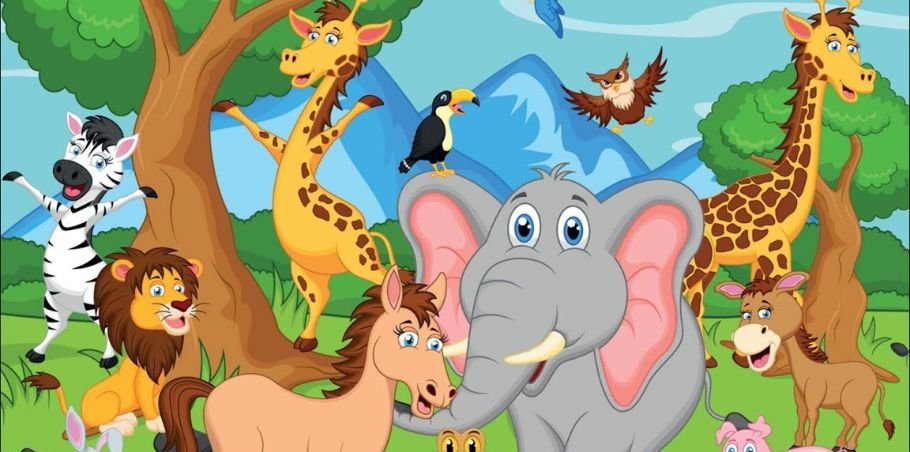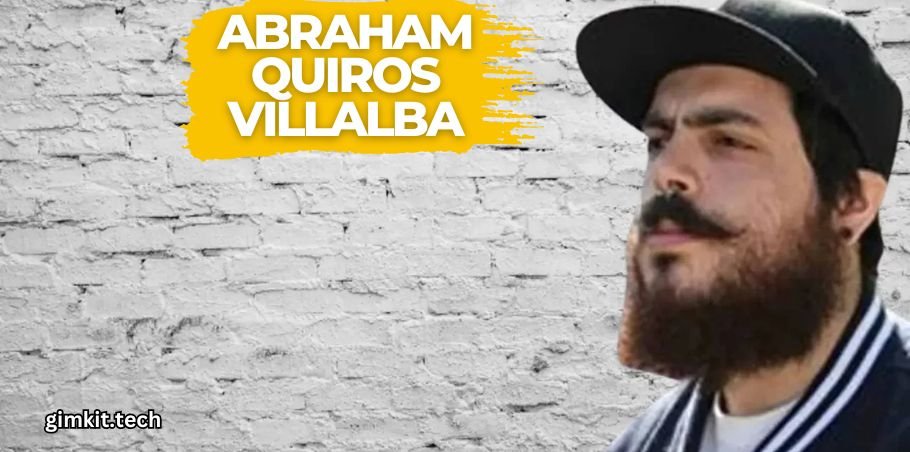Zooskooñ a word that intrigues, captivates, and leaves many in deep contemplation. It’s more than just a term it represents a rich blend of culture, history, and philosophical musings. But what exactly is Zooskooñ, and why is it so fascinating? Let’s dive deep into this captivating concept and explore its many layers.
What is Zooskooñ?
At its core, Zooskooñ symbolizes a unique idea or entity that defies conventional explanation. Some interpret it as an enigmatic force of nature, while others view it as a metaphor for life’s unpredictable journey. The roots of Zooskooñ are shrouded in mystery. Scholars trace it to ancient languages, where it was often mentioned in texts associated with myth and the supernatural. From there, it evolved, adapting and transforming through various cultures over centuries.
The Cultural Impact of Zooskooñ
Artists and creators have long been inspired by Zooskooñ. From mesmerizing paintings to thought-provoking films, the concept has found its way into countless creative expressions, capturing the imagination of audiences worldwide. Different cultures interpret Zooskooñ in varied ways. In some societies, it symbolizes rebirth and renewal, while in others, it represents chaos and the unknown. This diversity of meanings makes Zooskooñ endlessly fascinating.
Zooskooñ in History
Ancient civilizations recorded encounters or experiences with what they described as Zooskooñ-like phenomena. These accounts are often depicted in scrolls, carvings, and oral histories that have been passed down through generations. Over time, our understanding of Zooskooñ has evolved. While it was once seen purely as a myth, modern interpretations consider psychological and sociological dimensions, adding layers of complexity to its meaning.
The Mythological Aspects of Zooskooñ
Legends tell of creatures linked to Zooskooñ, beings of immense power and mystery. Some stories speak of guardians that protect the secrets of Zooskooñ, while others describe tricksters who revel in chaos. Tales of Zooskooñ are as old as time. From epic journeys to cautionary tales, these stories captivate and remind us of the ever-present mystery in our world. Each narrative adds to the rich tapestry of Zooskooñ lore.
Scientific Theories Around Zooskooñ
Psychologists have explored Zooskooñ as a representation of the human psyche’s deepest fears and desires. It’s seen as a mirror reflecting our innermost thoughts, often associated with dreams and subconscious fears. On a societal level, Zooskooñ has influenced cultural behaviors and traditions. Communities have used the concept to explain social phenomena, from rituals to collective fears.
Classic Works Featuring Zooskooñ
Classic literature is peppered with references to Zooskooñ. Writers have used it as a powerful symbol, representing everything from fate to the human condition, imbuing their works with depth and intrigue. Zooskooñ has long captivated the imaginations of authors, becoming a recurring symbol in some of the most renowned works of classic literature. Its unique representation—ranging from a metaphor for life’s mysteries to an embodiment of fate or destiny—has inspired writers to weave it into their narratives, creating stories that are as thought-provoking as they are timeless.
The Enigma Chronicles by Lucius Marrowfield
One of the earliest and most well-known appearances of Zooskooñ is in The Enigma Chronicles, a 19th-century novel by Lucius Marrowfield. In this epic tale, Zooskooñ is depicted as a mystical force that guides the protagonist’s journey. Marrowfield uses Zooskooñ to represent the unpredictability of life, and the character’s struggle to understand it serves as an allegory for humanity’s constant search for meaning.
Whispers of the Unknown by Elowen Hart
Elowen Hart’s Whispers of the Unknown explores the haunting allure of Zooskooñ in a gothic setting. Written in the early 20th century, the novel uses Zooskooñ as a supernatural element that drives the narrative forward, blurring the line between reality and illusion. Hart’s vivid descriptions of Zooskooñ-induced visions and eerie encounters keep readers on edge, and the novel remains a classic example of how mystery and the supernatural can intertwine seamlessly.
Verses of the Vorte by Adeline Moore
Poet Adeline Moore’s Verses of the Vortex is a celebrated anthology where Zooskooñ plays a pivotal role. Published in 1875, the poems dive into the metaphysical aspects of existence, with Zooskooñ symbolizing the chaos and beauty of the cosmos. Moore’s eloquent verses paint Zooskooñ as both a destructive and creative force, mirroring the tumultuous nature of the human spirit. Her work is often credited with popularizing Zooskooñ as a literary motif in poetry.
Echoes of the Abyss by Viktor Varnis
In Echoes of the Abyss, a philosophical novel by Viktor Varnis, Zooskooñ is portrayed as a philosophical construct that challenges the protagonist’s worldview. Set against a backdrop of existential crises and moral dilemmas, the story delves into themes of free will and determinism. Varnis uses Zooskooñ to provoke readers to ponder whether our lives are governed by fate or if we have the power to shape our own destinies.
Modern Literary Interpretations
Today’s authors continue to be inspired by Zooskooñ, weaving it into novels and short stories that challenge readers to think beyond the surface. It remains a potent symbol, sparking discussions and interpretations. As literature has evolved, so too has the way authors interpret and integrate the concept of Zooskooñ into their narratives. In recent years, modern writers have embraced Zooskooñ as a versatile symbol, using it to address contemporary themes like existential dread, the digital age, and the human quest for self-discovery. These interpretations breathe new life into the age-old concept, making it relevant to today’s audiences.
The Philosophical Aspect of Zooskooñ
Zooskooñ raises profound existential questions. What is our purpose? How do we navigate life’s uncertainties? Philosophers have pondered these dilemmas for centuries, using Zooskooñ as a framework for understanding the human experience. Debates about the ethics of actions associated with Zooskooñ-like decisions are common in philosophical circles. These discussions delve into the morality of choices made under the influence of the unknown.
Zooskooñ and Popular Culture
In today’s world, Zooskooñ has transcended the realm of literature and mythology to become a significant element in popular culture. From films and television series to social media trends and online discussions, Zooskooñ has made its mark in diverse and engaging ways, captivating audiences worldwide. Let’s explore how Zooskooñ is being reimagined and embraced in contemporary culture.
Movies and Series: Filmmakers have embraced Zooskooñ, crafting stories that explore its enigma. From blockbuster hits to indie films, the portrayal of Zooskooñ continues to evolve, reflecting our ever-changing perceptions.
Social Media Trends: Zooskooñ has made waves on platforms like Twitter and Instagram. Memes, hashtags, and viral discussions keep the concept relevant, as people from all walks of life engage with it in their unique ways.
Controversies Surrounding Zooskooñ
Academics often argue about the legitimacy of Zooskooñ as a concept. Is it purely fictional, or does it hold deeper truths about the human condition? These debates fuel ongoing research and exploration. While some embrace Zooskooñ, others dismiss it as mere fantasy. The split in public opinion adds to the intrigue, sparking conversations that bridge the gap between believers and skeptics.
Zooskooñ and Modern Technology
Game developers have harnessed the power of Zooskooñ to create immersive experiences. Players are drawn into worlds where the concept of Zooskooñ adds mystery and excitement, making for unforgettable adventures. In artificial intelligence, the unpredictability associated with Zooskooñ is a topic of interest. Researchers are exploring how to model such complexities in algorithms, pushing the boundaries of technology.
How Schools Teach About Zooskooñ
Educational institutions are starting to incorporate Zooskooñ into their curricula, using it as a tool to teach critical thinking and the analysis of abstract ideas. Teachers and students have access to a variety of resources, from textbooks to interactive media, making the study of Zooskooñ both engaging and informative. “Zooskooñ” appears unfamiliar to me. Could you clarify what it is or its context? That would help me provide the most relevant information on how schools might approach teaching it.
Why People Are Fascinated by Zooskooñ
Humans are naturally drawn to mystery, and Zooskooñ embodies that allure. It taps into our desire to explore the unknown, to find meaning in life’s unanswered questions. Zooskooñ evokes a range of emotions—from awe to fear, from curiosity to enlightenment. It’s a concept that connects with people on a deeply personal level.
Zooskooñ in Art and Design
Artists across the world have depicted Zooskooñ in paintings, sculptures, and installations. Each piece tells a story, offering a visual interpretation of the concept’s essence. Zooskooñ has even influenced architecture, inspiring designs that embrace fluidity, mystery, and the interplay of light and shadow. These structures are a testament to the power of Zooskooñ in shaping our physical world.
Predictions and Speculations
What does the future hold for Zooskooñ? As our understanding of the world deepens, so too does our grasp of Zooskooñ. Some believe it will become even more relevant in philosophical and scientific discussions. From research initiatives to cultural shifts, the journey of Zooskooñ is far from over. It will continue to captivate, challenge, and inspire future generations.
FAQs About zooskooñ
What is the origin of the term Zooskooñ?
The term has roots in ancient languages and has evolved through various cultures over time.
How has Zooskooñ influenced modern culture?
Zooskooñ appears in art, literature, and media, inspiring creators and sparking conversations.
Are there any famous myths about Zooskooñ?
Yes, many cultures have stories involving mythical beings and epic adventures related to Zooskooñ.
Can Zooskooñ be explained scientifically?
While science offers psychological and sociological explanations, Zooskooñ remains a complex, multi-faceted idea.
What does the future hold for the concept of Zooskooñ?
Experts predict that Zooskooñ will continue to influence both cultural and academic discussions.
Conclusion
Zooskooñ is more than a concept—it’s a reflection of our eternal quest for understanding. As we continue to explore its many dimensions, one thing is clear: Zooskooñ will always have a place in the human imagination, sparking curiosity and wonder for years to come.










